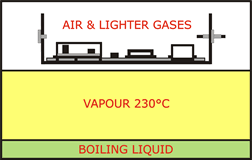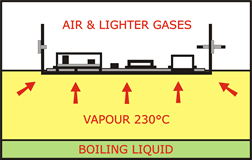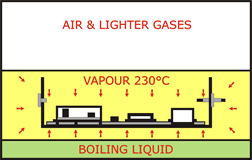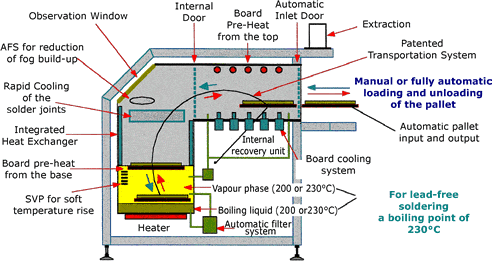 |
|
The
assembly is moved to the vapour phase. It was preheated by IR radiators
from the top. It also can be preheated on the upper boundary of
the vapour phase predominantly from below. |
| |
|
|
 |
|
The
assembly descends into the vapour phase. There it is heated up.
It is possible to control the heat transfer to the assembly in a
way that a soft temperature rise is performed.
The vapour condenses on the assembly and transfers its heat. Since
the vapour is chemically inert it forms an inert gas atmosphere
with 0ppm oxygen. This is done automatically without the use of
nitrogen. |
| |
|
|
 |
|
The
assembly can be heated up to a maximum temperature that equals the
temperature of the vapour. This temperature cannot be exceeded even
if it stays longer inside the vapour. Therefore no overheating
is possible. |
| |
|
|
 |
|
After
leaving the vapour phase there is still condensed fluid left on
the board. Due to the inner heat of the assembly the liquid evaporates
and a dry assembly leaves the machine. Rapid cooling system also
available for very thick boards and lead-free alloys. |
| |
|
|


